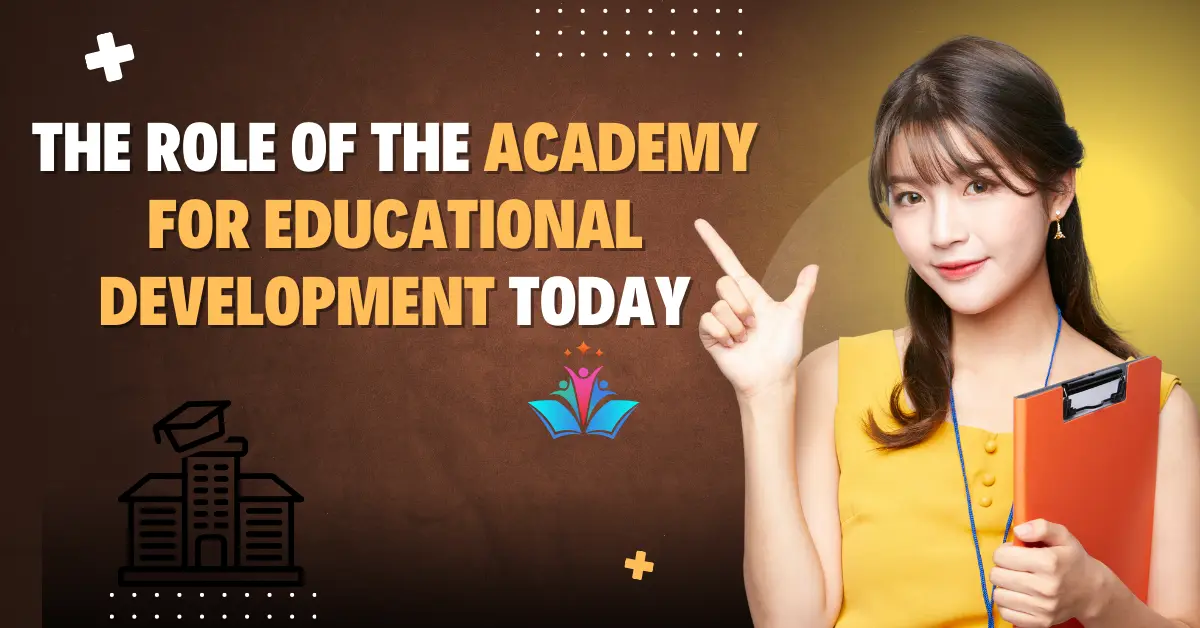In a world where education shapes the future of nations, the role of organisations like the Academy for Educational Development (AED) remains vital. While AED formally merged with FHI 360 in 2011, its legacy and methods still influence global education systems. Education is not just about classrooms or textbooks; it is about building the capacity of people and communities to solve real-life challenges. Today, educational development programmes continue to drive social progress, improve learning outcomes, and build sustainable futures.
This blog explores how AED’s strategies and principles remain relevant today. We will examine their impact on global education initiatives, their role in nonprofit educational organisations, and how their capacity-building efforts continue to shape education policy and reform worldwide.
-
What Is the Academy for Educational Development (AED)?
- AED’s Contribution to Global Education
- Learning Improvement Strategies That Still Influence Today
- Supporting Communities Through Education
- Partnerships and Policy – AED’s Role in Systemic Change
- How Nonprofit Educational Organisations Drive Social Development
- The AED Legacy – Why It Still Matters in 2025
- Lessons for Today’s Educational Sector
- Why AED Should Be Studied in Today’s Academic Circles
- Final Thoughts from Henry Luke
- Frequently Asked Questions
What Is the Academy for Educational Development (AED)?
Brief History of AED
The Academy for Educational Development was founded in 1961 in Washington, D.C., with a mission to improve education worldwide. It operated in more than 150 countries and became a trusted name in educational reform, especially in developing regions. AED worked with schools, governments, and international organisations to address the root causes of poor educational outcomes.
Transition into FHI 360 – What Changed and What Remains
In 2011, AED’s programmes and operations were merged into FHI 360, a global nonprofit organisation focused on human development. While the name AED no longer exists, the methods, approaches, and educational goals it championed are still implemented through FHI 360. Many of AED’s original teams continued their work under the new banner, ensuring continuity in educational development.
AED’s Core Purpose in Modern Education
At its heart, AED focused on one goal: expanding access to quality education. This involved designing learning improvement strategies, building teacher capacity, supporting policy reform, and enhancing the effectiveness of educational institutions. These efforts remain relevant and are still widely used in education-focused nonprofits today.
AED’s Contribution to Global Education
Supporting Access to Quality Education
AED promoted learning systems that reached underserved communities, especially in rural and conflict-affected regions. They developed scalable education solutions to improve access where it was limited.
Promoting Sustainable Education Practices
The focus was never on short-term fixes. AED believed in long-term impact through sustainable education practices. They worked on projects that trained local educators, developed culturally relevant materials, and aligned education with community goals.
Driving International Development in Education
From Africa to South Asia, AED supported ministries of education, trained teachers, and introduced innovative systems to improve governance in schools. These international development projects continue to shape the way NGOs and governments operate.
Learning Improvement Strategies That Still Influence Today
Building Better Classrooms with Evidence-Based Methods
AED focused on methods proven to work. They emphasised early-grade reading, learner-centred teaching, and active participation. Today, many educational innovation projects are based on these same foundations.
Technology in Learning – From Past to Present
Even before digital classrooms were standard, AED introduced computer-assisted learning in places with limited resources. They blended technology and traditional teaching, a method still in use today, especially in low-tech environments.
Supporting Communities Through Education
Capacity Building in Education: Teachers and Schools
AED-trained teachers are not just to teach, but to lead. Their workshops and mentoring systems helped build confidence, skills, and leadership in educators. Schools also received help with planning, budgeting, and improving school management.
Community Education Support at the Local Level
AED’s programmes often included parents, community leaders, and local organisations. They believed education must include the whole community. This model remains popular among modern education NGOs operating in grassroots areas.
Partnerships and Policy – AED’s Role in Systemic Change
Collaborating with Governments and NGOs
AED did not work alone. It partnered with education ministries, international donors, and nonprofits to align education systems with broader development goals. These partnerships made it easier to introduce change and scale effective programmes.
Reforming Policies to Enable Lasting Educational Growth
From curriculum development to assessment reforms, AED helped shape education policies that could support long-term improvements. Their research and pilot programmes often became national standards in developing countries.
How Nonprofit Educational Organisations Drive Social Development
Aligning Education with Social Outcomes
AED showed that education is more than grades. It’s about providing people with the tools to enhance their health, income, and gender equality. Their programmes linked education with social outcomes, a practice still seen in today’s integrated development projects.
Promoting Equity and Inclusion in Learning
AED prioritised education for girls, children with disabilities, and other marginalised groups. They pushed for inclusive policies and supported schools in removing barriers. This approach helped promote access to quality education for all.
Read more: How Long Does It Take to Write a 2000-Word Essay.

The AED Legacy – Why It Still Matters in 2025
Learning Communities Built Over Decades
AED believed in developing learning communities – networks of teachers, parents, and learners who support each other. This idea has shaped the structure of many modern education programs, including digital learning communities.
The Ongoing Relevance of AED-Led Models
Even though AED no longer operates under its original name, the models it created continue to inspire. Whether it’s mentoring teachers, creating educational innovation projects, or launching global education initiatives, the DNA of AED remains visible.
Lessons for Today’s Educational Sector
What Modern Programmes Can Learn from AED
- Focus on the learner, not just the system
- Use real-world data to shape teaching
- Involve communities at every level
- Build local capacity for lasting change
Why AED Should Be Studied in Today’s Academic Circles
For students studying education or international development, AED is a case study in practical nonprofit work. Their balanced focus on policy, practice, and people makes them a model worth exploring.
Final Thoughts from Henry Luke
The Academy for Educational Development may no longer operate as a standalone body, but its work continues to shape educational progress worldwide. In 2025, as we face new learning challenges due to global inequality, conflict, and digital divides, the lessons from AED are more valuable than ever.
From learning improvement strategies to education and social development, the principles that AED promoted remain effective. They remind us that education must be inclusive, community-driven, and linked to real-world outcomes.
At AllAssignmentHelp.org, we recognise the importance of quality education and the efforts of organisations like AED. As a trusted academic service provider in Australia, we support students in achieving excellence. Whether you’re studying education, development, or policy reform, remember that change begins with knowledge — and AED’s legacy proves that well.
Frequently Asked Questions
What does the Academy for Educational Development (AED) do today?
Even though AED merged with FHI 360, its work still goes on. The team supports schools, trains teachers, and helps students learn better. AED’s ideas still guide many global education projects today.
Why is AED important for education in 2025?
AED’s work helps more children get a good education. It focused on training teachers, making better school plans, and helping poor areas learn. These ideas still help countries grow smarter and stronger.
How did AED help global education development?
AED worked in over 150 countries. It built learning programmes, worked with schools, and helped change old ways of teaching. Their work helped millions of students and still guides education groups today.
Can nonprofit groups still use AED’s education model?
Yes, many groups still use AED’s way of working. They follow AED’s plan to support local teachers, help poor communities, and make learning fair for all. It’s still one of the best ways to improve schools.








